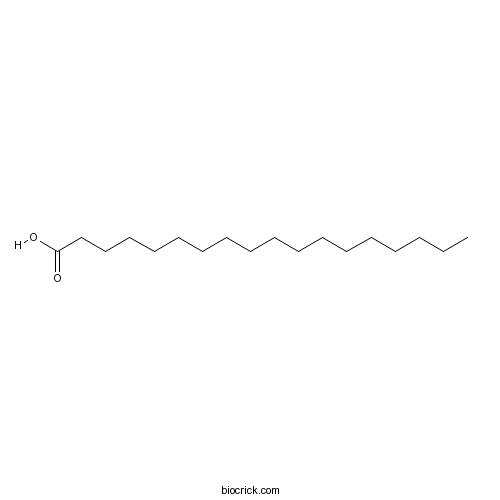Ziziphus mauritiana
Ziziphus mauritiana
1. The products in our compound library are selected from thousands of unique natural products; 2. It has the characteristics of diverse structure, diverse sources and wide coverage of activities; 3. Provide information on the activity of products from major journals, patents and research reports around the world, providing theoretical direction and research basis for further research and screening; 4. Free combination according to the type, source, target and disease of natural product; 5. The compound powder is placed in a covered tube and then discharged into a 10 x 10 cryostat; 6. Transport in ice pack or dry ice pack. Please store it at -20 °C as soon as possible after receiving the product, and use it as soon as possible after opening.
Natural products/compounds from Ziziphus mauritiana
- Cat.No. Product Name CAS Number COA
-
BCN3820
Stearic Acid57-11-4
Instructions

Therapeutic potential of root and stem bark of wild medicinal plant Ziziphus mauritiana (Lamk.) against silica induced toxicity in Wistar albino rats.[Pubmed: 29727735]
Ziziphus mauritiana (Lamk.) of the family Rhamnaceae is a traditional herbal medicinal plant commonly called as 'ber' (Indian jujube). It is traditionally used as food source and helps in treatment of various diseases like malaria, asthma, diarrhoea, typhoid, diabetes, skin diseases and acts as a pain killer.
Spatially explicit multi-threat assessment of food tree species in Burkina Faso: A fine-scale approach.[Pubmed: 28880962]
Over the last decades agroforestry parklands in Burkina Faso have come under increasing demographic as well as climatic pressures, which are threatening indigenous tree species that contribute substantially to income generation and nutrition in rural households. Analyzing the threats as well as the species vulnerability to them is fundamental for priority setting in conservation planning. Guided by literature and local experts we selected 16 important food tree species (Acacia macrostachya, Acacia senegal, Adansonia digitata, Annona senegalensis, Balanites aegyptiaca, Bombax costatum, Boscia senegalensis, Detarium microcarpum, Lannea microcarpa, Parkia biglobosa, Sclerocarya birrea, Strychnos spinosa, Tamarindus indica, Vitellaria paradoxa, Ximenia americana, Ziziphus mauritiana) and six key threats to them (overexploitation, overgrazing, fire, cotton production, mining and climate change). We developed a species-specific and spatially explicit approach combining freely accessible datasets, species distribution models (SDMs), climate models and expert survey results to predict, at fine scale, where these threats are likely to have the greatest impact. We find that all species face serious threats throughout much of their distribution in Burkina Faso and that climate change is predicted to be the most prevalent threat in the long term, whereas overexploitation and cotton production are the most important short-term threats. Tree populations growing in areas designated as 'highly threatened' due to climate change should be used as seed sources for ex situ conservation and planting in areas where future climate is predicting suitable habitats. Assisted regeneration is suggested for populations in areas where suitable habitat under future climate conditions coincides with high threat levels due to short-term threats. In the case of Vitellaria paradoxa, we suggest collecting seed along the northern margins of its distribution and considering assisted regeneration in the central part where the current threat level is high due to overexploitation. In the same way, population-specific recommendations can be derived from the individual and combined threat maps of the other 15 food tree species. The approach can be easily transferred to other countries and can be used to analyze general and species specific threats at finer and more local as well as at broader (continental) scales in order to plan more selective and efficient conservation actions in time. The concept can be applied anywhere as long as appropriate spatial data are available as well as knowledgeable experts.
Assessment of Ziziphus mauritiana grown on fly ash dumps: Prospects for phytoremediation but concerns with the use of edible fruit.[Pubmed: 27936885]
A field study was carried out on fly ash dumps of Panki Thermal Power Station to assess the phytoaccumulation of elements in various plant parts of edible fruit tree Ziziphus mauritiana. Out of the twelve analysed elements, the highest concentration was found for Fe followed by Mn > Se > Zn > Mo > Cu > Cr > Pb > Cd >Ni > As > Co in rhizospheric substrate of Z. mauritiana grown on fly ash dumps. Metal accumulation, bioconcentration factor and translocation factor for each metal was calculated in various parts of the edible fruit tree. Significant variations of metal accumulations were observed amongst various plant parts. Accumulation of toxic elements was higher in roots and it gradually declined towards the aerial parts of the plant corresponding to its distance from the ground. The concentration of some elements in fruit tree was found to be above prescribed limits in edible parts. Therefore, the present study suggested that additional care should be undertaken, if edible fruit trees are considered for phytoremediation or afforestation programs of FA dumps.


